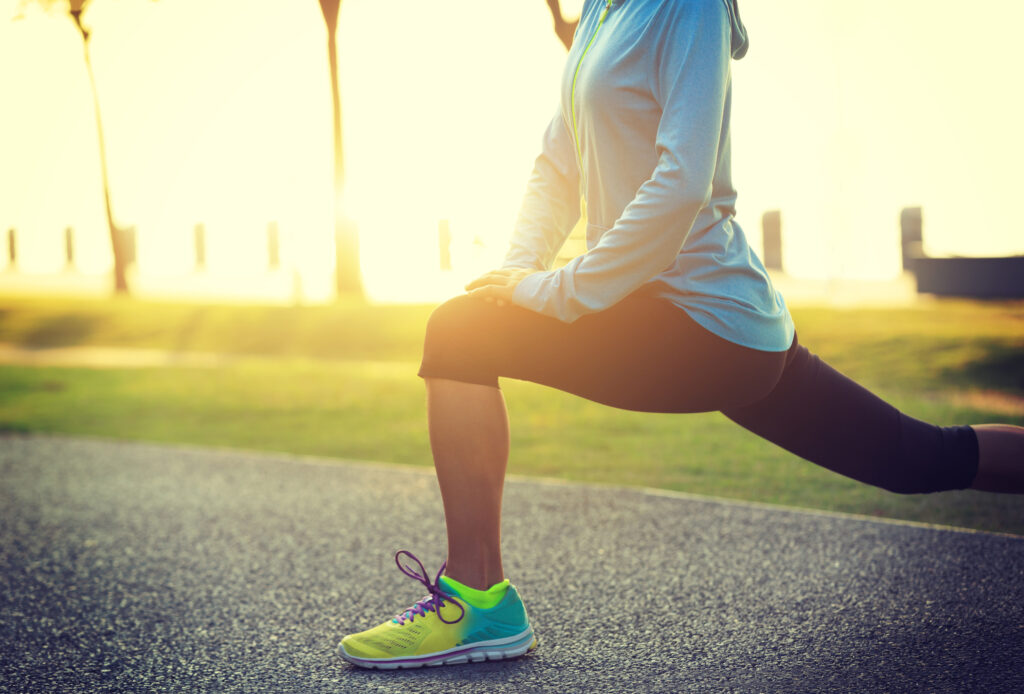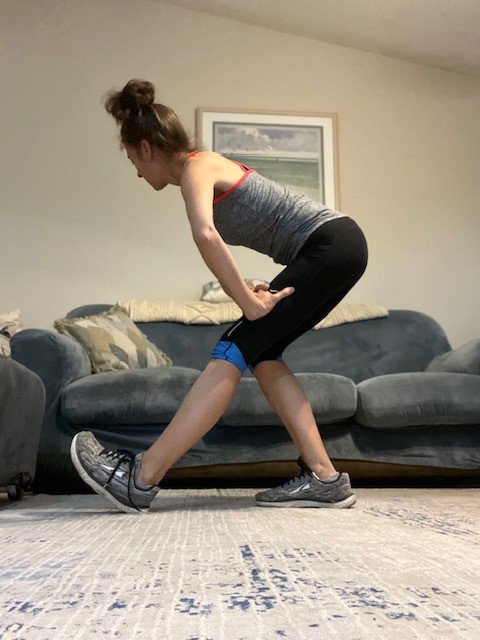
To stretch or not to stretch, that is the question. It’s all gotten a bit confusing, and it can be difficult to know what the best thing to do is. I know that I’ve struggled to get my stretching in after a run and now I’m a bit relieved to know that studies indicate it’s not necessary for good recovery – YAY!
As a general rule, stretching has not been shown in studies to aid in recovery after an intense workout. Despite the lack of scientific evidence in this area, that does not mean that stretching has no value or benefits. Many coaches and runners still swear by stretching and it is part of most injury rehab protocols.
While the studies are a bit surprising, that does not imply that stretching has no benefits. Nor does is it mean you can skip a proper cool-down. Read on to see how the data add ups and what it means for your exercise plan and recovery.
Stretching before or after exercise has not been shown to improve recovery

It may seem shocking, but studies have not been able to show that stretching prevents injury nor has it been shown to improve recovery when done after a workout. Most agree that the studies are not conclusive in this area.
Stretching is easy to perform improperly which can lead to injury. There have also been many studies that show a decrease in performance when engaged in before a workout as the following study showed.
“Unfortunately, however, static stretching as part of a warm-up immediately prior to exercise has been shown detrimental to dynamometer-measured muscle strength19–29 and performance in running and jumping.” CURRENT CONCEPTS IN MUSCLE STRETCHING FOR EXERCISE AND REHABILITATION – PMC (nih.gov)
Other studies found that stretching decreases blood flow temporarily which is why is has not been found to be beneficial as a good recovery protocol.
“If a goal of recovery-adaptation modalities is to increase blood flow, it would appear that stretching after a workout does not help and may actually discourage blood flow.”
Stretching After Exercise: Does it Aid in Recovery? – The Healing Lotus
Increased blood flow is important after a workout as it promotes the recovery process in delivering needed nutrients and oxygen while removing waste products from injured areas. While stretching does not appear to aid in this aspect there many be other benefits not yet studied.
Should I be stretching?

So, if there doesn’t seem to be any data indicating that stretching can aid in exercise recovery, you may wonder if there are any benefits to stretching. Should I be stretching or not?
While the benefits of stretching to running recovery are inconclusive, experts do agree that good flexibility is important for overall fitness. Stretching improves flexibility which helps with increased range of motion and injury prevention.
Lack of flexibility can lead to many running related injuries such as Achilles’ tendinitis and are a major factor in plantar fasciitis and shin splints. Lack of flexibility is also an indication of a lack of strength which can cause even more problems.
If you still aren’t aren’t sure if stretching is right for you, consider a what is done during physical therapy after an injury. Almost all rehab therapy involves some form of stretching and some protocols are rather extensive in the use of stretching.
One last thing to consider when it comes to stretching is how many athletes and coaches still recommend stretching as part of a healthy exercise routine. Pick up any running book and you’re guaranteed to find a section on stretching and likely some example exercises.
What are the potential benefits of stretching?
Before dismissing stretching from your exercise routine, be sure to consider the potential benefits you could be missing out on. Most experts including doctors, physical therapists, and coaches seem to agree with many of the benefits outlined below.
- Increased range of motion
Good range of motion is important in exercise performance as it improves the efficiency and power of the muscles and thus the energy released. Performing an exercise to within your full range of motion will improve your ability to perform an activity to your best ability.
- Increased flexibility
Good flexibility results in greater range of movement which influences our ability to comfortably move our muscles and joints. This affects many areas of body including our posture which supports athletic performance.
- Helps reduce aches and pain
Some studies have found that stretching may aid in lower back pain. Most doctors will recommend some targeted stretching exercises if you have ever suffered from this problem. Others have found stretching helps loosen up tight muscles after a workout thus reducing some of the post workout aches and pains.
- Improves mood and focus
Many relate improvements in mood and focus after a stretching regime. Stretching, if performed properly, can relax the mind and body thus leading to more positive feelings and increased ability to concentrate.
- Improves physical performance
The more efficient your muscles and joints work, the better the body is to performing any activity. As mentioned earlier, good range of motion and flexibility are needed to help the body perform an activity in the most efficient and effective manner.
- Relieves tension in muscles
Well stretched muscles hold less tension. Tense muscles tend to restrict circulation cutting off the supply of vital nutrients and oxygen. Stretching can aid in relaxing tight muscles, but may not be as effective as a massage.
- Improves posture
Stretching muscles in the shoulders, back, and chest area can lead to better alignment and supports good posture.
How to stretch safely
The best time to stretch would be when your muscles are already warmed up and elongated. Avoid stretching before your workout as stretching a tight muscle can cause injury. It is also important to remember to never stretch to the point of pain.
Current recommendations on stretching are to do so for shorter duration and intensity, especially if doing static stretching (hold the stretch in place for a period of time). It’s recommended to hold a stretch for no more than 30-60 seconds and at a moderate intensity level (5 out of 10).
Dynamic stretches (active movement where joints and muscles cycle through a range of motion) are usually preferred to static stretching. They tend to be more efficient and movements conducive to the activity you intend to do are most productive
Key Takeaways

There is not sufficient evidence supporting the benefits of stretching as part of a running recovery program. Despite the lack of evidence, many experts including doctors, physical therapists, and coaches support stretching as part of an overall healthy lifestyle.
I personally do participate in some gentle stretches after running as I grew up stretching as a recreational gymnast and dancer. As I’ve aged, I have adjusted some stretches to be less intense and I am careful not to push my body in this respect.
The risks of getting injured from stretching improperly are high so caution should be taken if you choose to engage in a stretching regime. Make sure to follow recommendations of any health care provider and seek appropriate medical attention and advice before starting any new exercise (or stretching) routine.